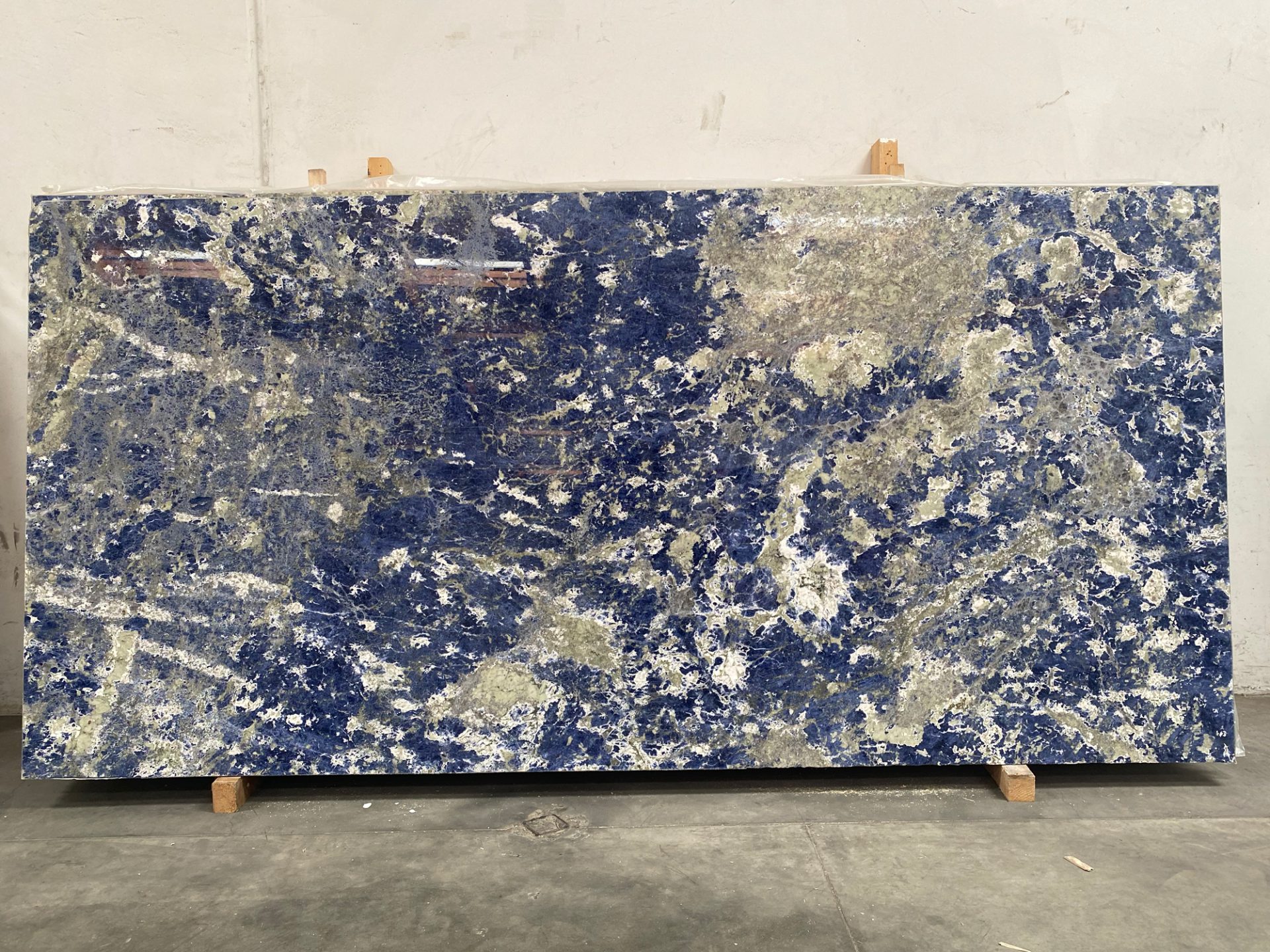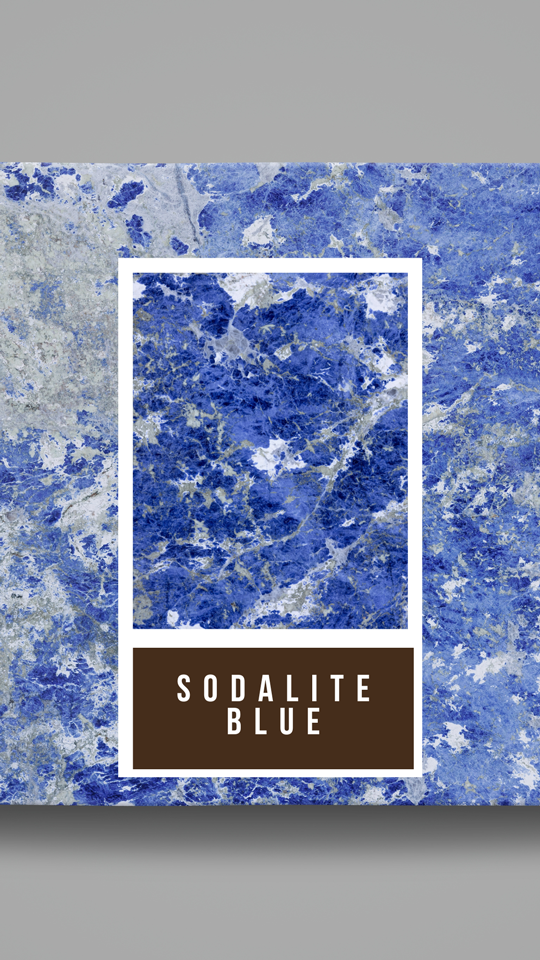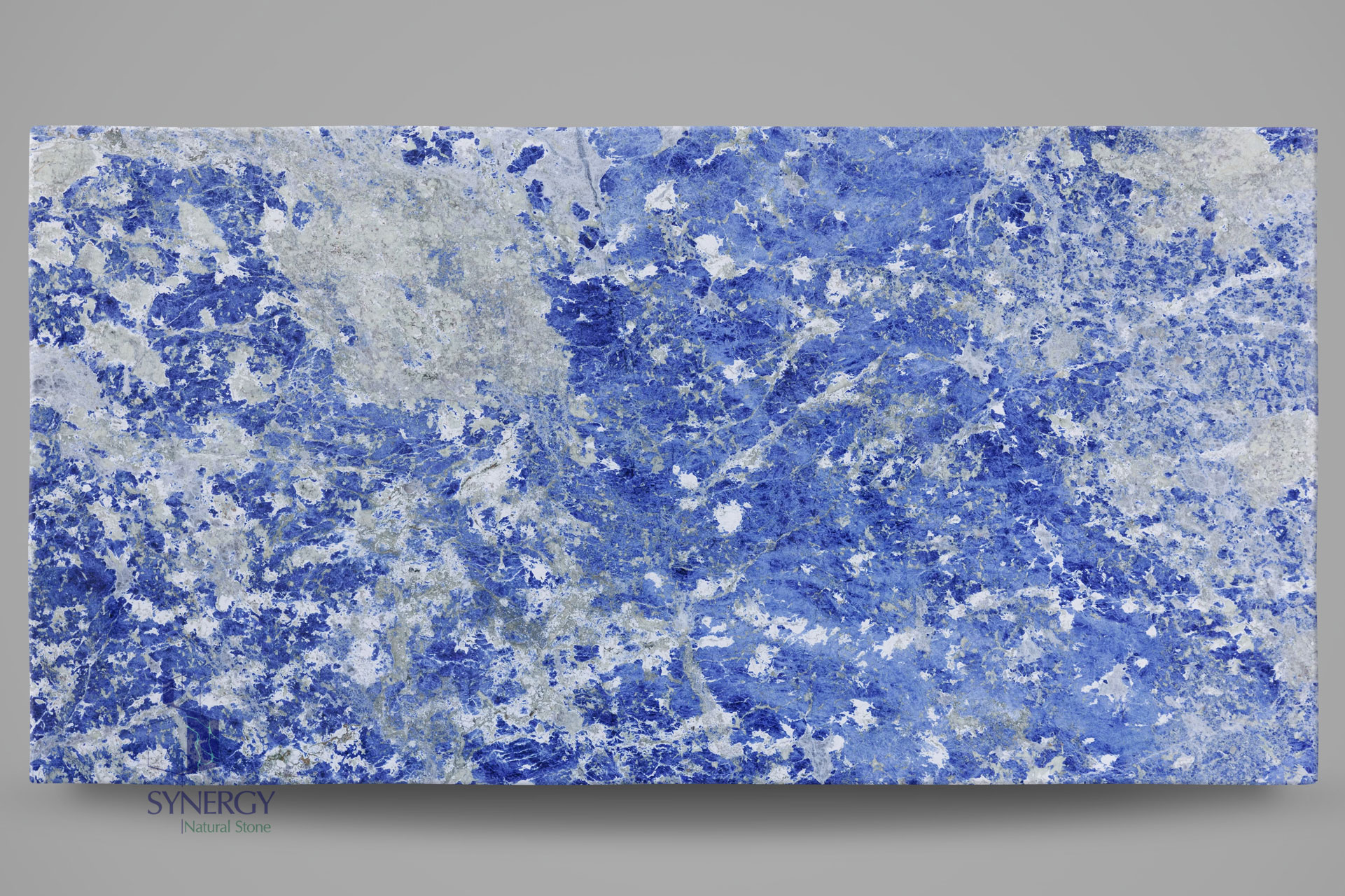Sodalite Blue






Sodalite is a blue
Sodalite is a blue stone, not a combination of sodalite and another stone. It’s a genuine gemstone known for its rich blue color and often has white calcite veining. Here’s a breakdown of its key characteristics:
- Color: Sodalite’s defining feature is its blue color, ranging from a deep royal blue to a lighter sky blue. It frequently has white calcite veining that adds visual interest.
- Origin: Sodalite can be found in various locations worldwide, including Canada, Greenland, Italy, Brazil, and Madagascar.
- Properties: Sodalite is a relatively hard stone but softer than granite. Scratching is a possibility, so avoid using harsh chemicals or abrasive cleaners. Sealing isn’t necessary, but it can help enhance its luster.
- Light Translucency: Sodalite can be translucent to some degree, allowing some light to pass through, especially in thinner pieces.
Uses of Sodalite Blue Stone:
- Jewelry: Sodalite is a popular gemstone used in necklaces, earrings, bracelets, and rings. It can be cut and polished into various shapes and sizes.
- Sculptural Objects: Sodalite can be carved into small sculptures or decorative objects due to its hardness.
- Tumbled Stones: Smooth, polished sodalite stones are used for their aesthetic appeal or metaphysical properties.
Metaphysical Properties (beliefs):
- Some believe sodalite possesses metaphysical properties, promoting logic, communication, and inner peace.
Things to Consider with Sodalite Blue Stone:
- Variations: Sodalite’s blue color can vary in intensity and tone. The presence and amount of white veining will also influence the overall appearance.
- Clarity: Sodalite can have inclusions or blemishes. The level of clarity can affect the value of the stone for jewelry use.
- Care: Sodalite is relatively durable but can scratch. Avoid using harsh chemicals or abrasive cleaners. Wipe with a soft, damp cloth for cleaning.
Sodalite blue stone is a beautiful and versatile gemstone with a rich history and cultural significance. Whether you’re looking for a gemstone for jewelry, a decorative object, or simply appreciate its beauty, sodalite is a great choice.
